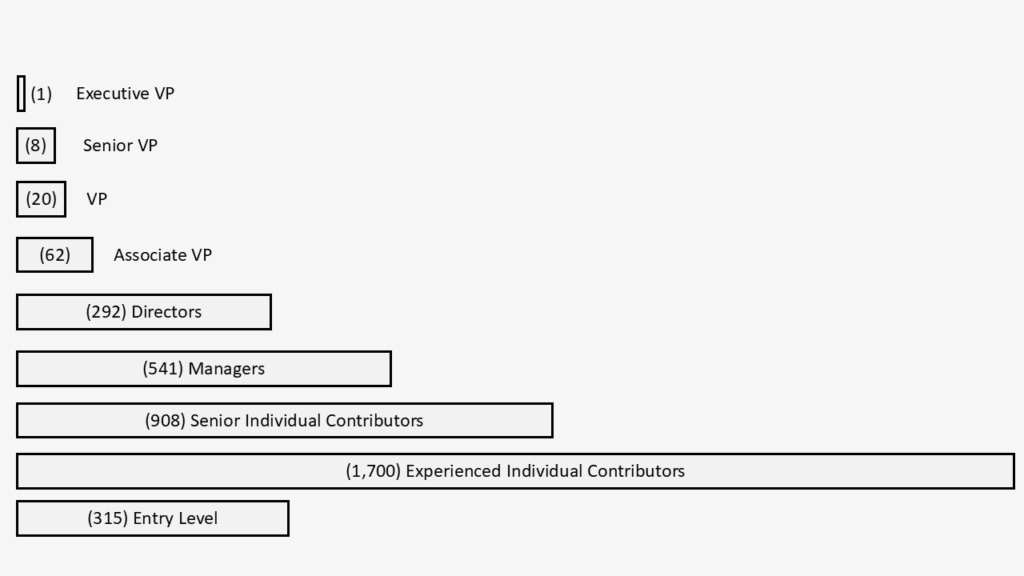How many people do you have to beat to win the executive position you’ve been eyeing?
When mentoring others on executive career paths, I find a bit of math to be useful in setting expectations as it can take some individuals many attempts to win one of the positions they want. For others, the opportunity may never present itself. And not because they don’t have applicable skills, but because there are many others with desirable skills applying for the positions, as well.
Many large companies’ associate populations are structured as a pyramid or a diamond. Either way, the top of the organization has few executives with many non-executive level associates. For example, say you are mentoring a manager who is interested in becoming a Senior Vice President one day and wants to understand possible career paths, moving from current position to Director, to Associate Vice President to Vice President, to Senior Vice President. And after working through the career discussion framework, it’s clear the person wants to stay in his current organization in the company, one with the following mix:

In a large organization like this, it may be common practice for the Director level positions to be filled by either the Manager or Senior Individual Contributor level. That would mean for 292 positions there is a possible population of 1,449 associates who could apply for those positions, not including external applicants. And moving from Director level to AVP level provides an internal pool of 292 for a total of 62 positions. And so on, ultimately making the point to the person there are only eight SVP positions and many who are interested in working toward those.
Extending the example, it’s unlikely every Director would be interested in becoming an AVP but say it’s even 50% of the those at that level. That’s still 146 people. Further, your mentee is unlikely to be interested in every AVP level position, which is true for other associates, as well. Perhaps she is only interested in eight of them. She is likely now one of twenty or more who could be applying for each of those eight positions of interest.
Sharing the math is not intended to discourage people from striving for those positions, but to help them understand how significant the competition is as they advance and to encourage and motivate them to be their best if they choose to apply. Often, they do. Sometimes, the math provides insight that guides them to choose other career paths where they can be happier. This conversation can also be helpful in organizations where moving from a junior individual contributor to a senior level associate occurs rapidly (as described in this post, for example). Associates may feel they are on the “fast track” and then hit a wall, wondering what they’re doing wrong to slow down their careers when, in fact, they aren’t doing anything. It’s simply the math.
Share your thoughts below.
What approach do you use with mentees to help them understand the odds of winning a senior level position and motivating them to prepare for the competition?



Leave a Reply